Experts have called for the government to install a comprehensive pipeline monitoring system to avoid a repetition of the gas explosions that took place in Greater Kaohsiung on Thursday night and early Friday morning, causing at least 28 deaths and leaving 286 people injured.
Petrochemical companies have vast networks of underground pipelines in Kaohsiung, said Chen Chih-yung (陳志勇), professor of chemical engineering at National Cheng Kung University.
“To prevent such a tragedy from recurring, we must have transparency. People have the right to know the real information,” said Chen, who also serves on the board of CPC Corp, Taiwan (CPC, 台灣中油) as an independent director.
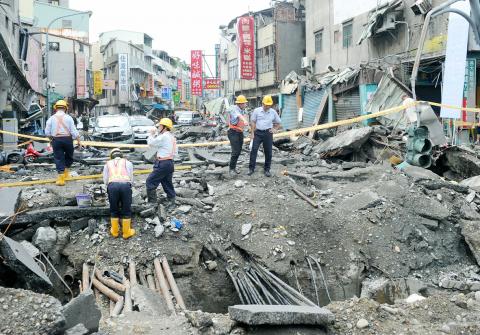
Photo: Wang Min-wei, Taipei Times
“The government should inform the public where the petrochemical pipelines are buried, then a monitoring system must be installed for the entire petrochemical pipeline network in the city. Also, the government must establish standard operating procedures for emergency responses,” he said.
Chen said the most important thing now is for the government to calm public fears.
“Of course, we must find out who is responsible for the gas explosions, but that is not the priority at this time,” he said. “The first thing to do is to tell the public where the pipelines are laid and where there are no pipelines. Like when an earthquake strikes, information on the epicenter is reported on the news, so people can be alert.”
However, Chen said he knows that if maps of underground pipelines were published, they might affect real-estate prices.
“However, people have the right to know. To understand a situation better can help in prevention. It’s not knowing what and where [the pipelines are] that is most frightening to people,” Chen said.
“CPC is the top boss of Taiwan’s petrochemical industry, so it should be the first to come out and make a comprehensive examination of all the old and aging pipelines,” he added, saying that all petrochemical companies have installed pressure gauges at both ends of pipelines, which help to detect leaks.
However, he said he was not sure whether there are pressure gauges throughout other sections of pipe and added that there are other engineering methods to check on leaks.
“For example, in culvert pipes, monitoring devices are installed at regular intervals. It costs more money to install such systems and there are other factors considered. So we are not sure whether Taiwan’s petrochemical companies have done so,” Chen said.
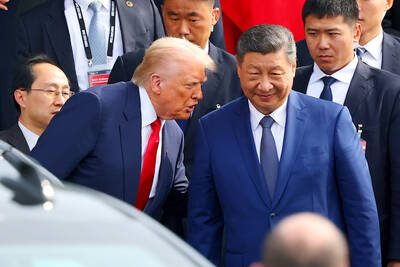
UKRAINE, NVIDIA: The US leader said the subject of Russia’s war had come up ‘very strongly,’ while Jenson Huang was hoping that the conversation was good Chinese President Xi Jinping (習近平) and US President Donald Trump had differing takes following their meeting in Busan, South Korea, yesterday. Xi said that the two sides should complete follow-up work as soon as possible to deliver tangible results that would provide “peace of mind” to China, the US and the rest of the world, while Trump hailed the “great success” of the talks. The two discussed trade, including a deal to reduce tariffs slapped on China for its role in the fentanyl trade, as well as cooperation in ending the war in Ukraine, among other issues, but they did not mention
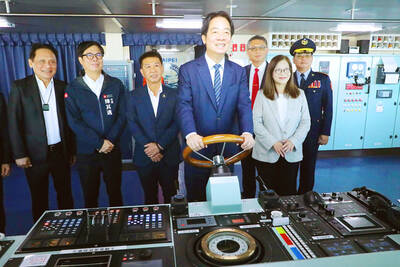
CALL FOR SUPPORT: President William Lai called on lawmakers across party lines to ensure the livelihood of Taiwanese and that national security is protected President William Lai (賴清德) yesterday called for bipartisan support for Taiwan’s investment in self-defense capabilities at the christening and launch of two coast guard vessels at CSBC Corp, Taiwan’s (台灣國際造船) shipyard in Kaohsiung. The Taipei (台北) is the fourth and final ship of the Chiayi-class offshore patrol vessels, and the Siraya (西拉雅) is the Coast Guard Administration’s (CGA) first-ever ocean patrol vessel, the government said. The Taipei is the fourth and final ship of the Chiayi-class offshore patrol vessels with a displacement of about 4,000 tonnes, Lai said. This ship class was ordered as a result of former president Tsai Ing-wen’s (蔡英文) 2018
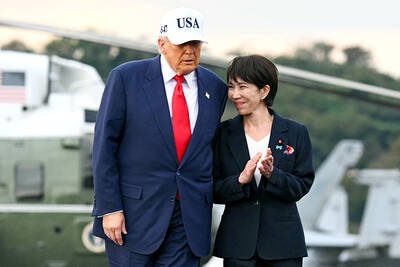
Japanese Prime Minister Sanae Takaichi yesterday lavished US President Donald Trump with praise and vows of a “golden age” of ties on his visit to Tokyo, before inking a deal with Washington aimed at securing critical minerals. Takaichi — Japan’s first female prime minister — pulled out all the stops for Trump in her opening test on the international stage and even announced that she would nominate him for a Nobel Peace Prize, the White House said. Trump has become increasingly focused on the Nobel since his return to power in January and claims to have ended several conflicts around the world,
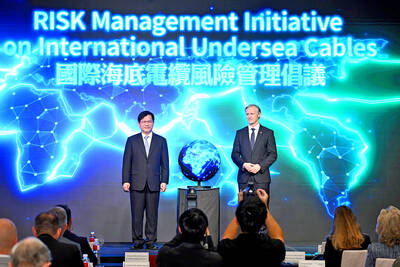
GLOBAL PROJECT: Underseas cables ‘are the nervous system of democratic connectivity,’ which is under stress, Member of the European Parliament Rihards Kols said The government yesterday launched an initiative to promote global cooperation on improved security of undersea cables, following reported disruptions of such cables near Taiwan and around the world. The Management Initiative on International Undersea Cables aims to “bring together stakeholders, align standards, promote best practices and turn shared concerns into beneficial cooperation,” Minister of Foreign Affairs Lin Chia-lung (林佳龍) said at a seminar in Taipei. The project would be known as “RISK,” an acronym for risk mitigation, information sharing, systemic reform and knowledge building, he said at the seminar, titled “Taiwan-Europe Subsea Cable Security Cooperation Forum.” Taiwan sits at a vital junction on